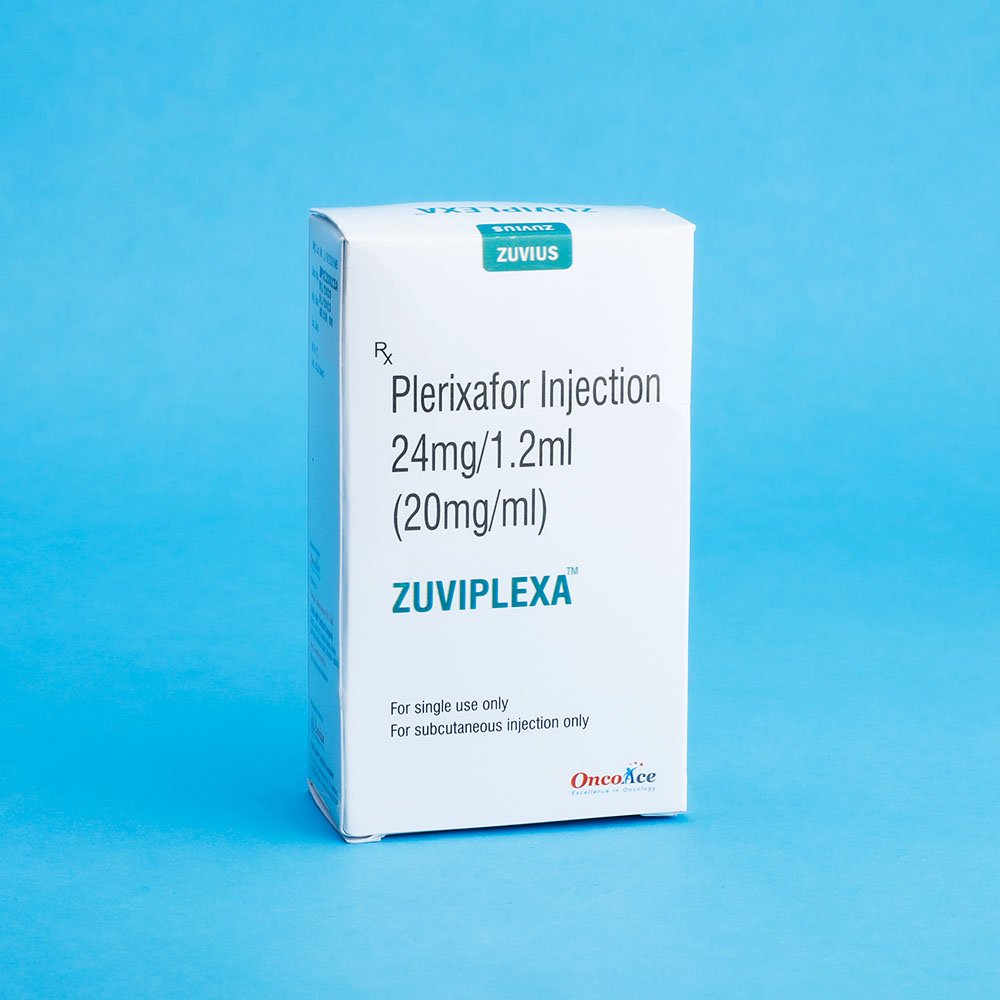Zuviplexa
Plerixafor
Strength: 24mg
Pack Size: 1 vial
Drug Class: Hematopoietic Stem Cell Mobilizers
Dosage and Administration:
The recommended dose of Zuviplexa by subcutaneous injection is based on body weight:
- 20 mg fixed dose or 0.24 mg/kg of body weight for patients weighing ≤83 kg.
- 0.24 mg/kg of body weight for patients weighing >83 kg.
Single-use vial containing 1.2 mL of a 20 mg/mL solution.
Cold Storage: no
Plerixafor is a hematopoietic stem cell mobilizer with a chemical name l, 1’-[1,4phenylenebis(methylene)]-bis-1,4,8,11-tetraazacyclotetradecane. It has the molecular formula C28H54N8. The molecular weight of plerixafor is 502.79 g/mol. The structural formula is provided in

Plerixafor is a white to off-white crystalline solid. It is hygroscopic. Plerixafor has a typical melting point of 131.5°C.
Zuviplexa (plerixafor) injection is indicated in combination with granulocyte-colony stimulating factor (G-CSF) to mobilize hematopoietic stem cells (HSCs) to the peripheral blood for collection and subsequent autologous transplantation in patients with non-Hodgkin’s lymphoma (NHL) and multiple myeloma (MM).
Plerixafor is an inhibitor of the CXCR4 chemokine receptor and blocks binding of its cognate ligand, stromal cell-derived factor-1α (SDF-1α). SDF-1α and CXCR4 are recognized to play a role in the trafficking and homing of human hematopoietic stem cells (HSCs) to the marrow compartment.
- Keep out of reach of children.
- Take as directed by physician.
Embryo-Fetal Toxicity
Based on findings from animal reproduction studies, Zuviplexa can cause fetal harm when administered to a pregnant woman. Plerixafor administration to pregnant rats during organogenesis resulted in embryo-fetal mortality, structural abnormalities, and alterations to growth at exposures approximately 10 times the exposure at the recommended human dose.
Pregnancy
Limited available data with Zuviplexa use in pregnant women are insufficient to inform a drug-associated risk of adverse developmental outcomes. In animal reproduction studies, subcutaneous administration of plerixafor to pregnant rats during organogenesis at doses 10times the maximum recommended human doses resulted in embryo-fetal mortality, structural abnormalities, and alterations to growth.
Lactation
There are no data on the presence of plerixafor in human milk, the effect on the breastfed child, or the effect on milk production. Because of the potential serious adverse reactions in the breastfed child, advise females that breastfeeding is not recommended during treatment with Zuviplexa and for one week after the final dose.










